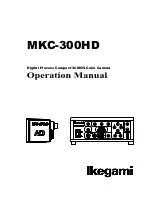
K
: Red-eye reduction mode
If you select red-eye reduction mode and then
take a picture using the flash, the red-eye
reduction lamp lights for about 1 second
before the flash fires, thereby reducing the
tendency for people’s eyes to appear red in
pictures taken in low-light conditions.
75
3
L
: Slow synchro mode
In flash photography, the shutter speed is
normally set automatically to 1/125 sec.
However, in slow synchro mode, a slower
shutter speed is used to allow the background
to be exposed also. This allows you to take
pictures that capture the full atmosphere of an
evening or night scene.
• You can set red-eye reduction mode and slow synchro mode concurrently by
selecting the modes so that red-eye reduction slow synchro mode icon “
:
”
appears in the top display panel.
• The synchro modes that can be set may vary depending on the exposure
mode. See “Combining Modes” on P.80 for information on the possible
combinations of synchro modes and exposure modes.
Synchro Mode Types and Features
Notes on the Synchro Modes
• In red-eye reduction mode and slow synchro red-eye reduction mode,
because there is a 1 second delay for the red-eye reduction lamp to operate
before the flash fires, care must be taken that the subject does not move until
the shutter actually releases. (These modes should not be used in situations
such as snapshots where you need the camera to respond immediately.)
• Depending on which lens is mounted on the camera, the light from the red-
eye reduction lamp may be obstructed by the lens so that the effect of red-eye
reduction is lost for people in some positions in the shot.
• In slow synchro mode and slow synchro red-eye reduction mode, take care to
avoid camera shake since a slower than usual shutter speed is used. (A
tripod should be used.)
☞
Note
















































